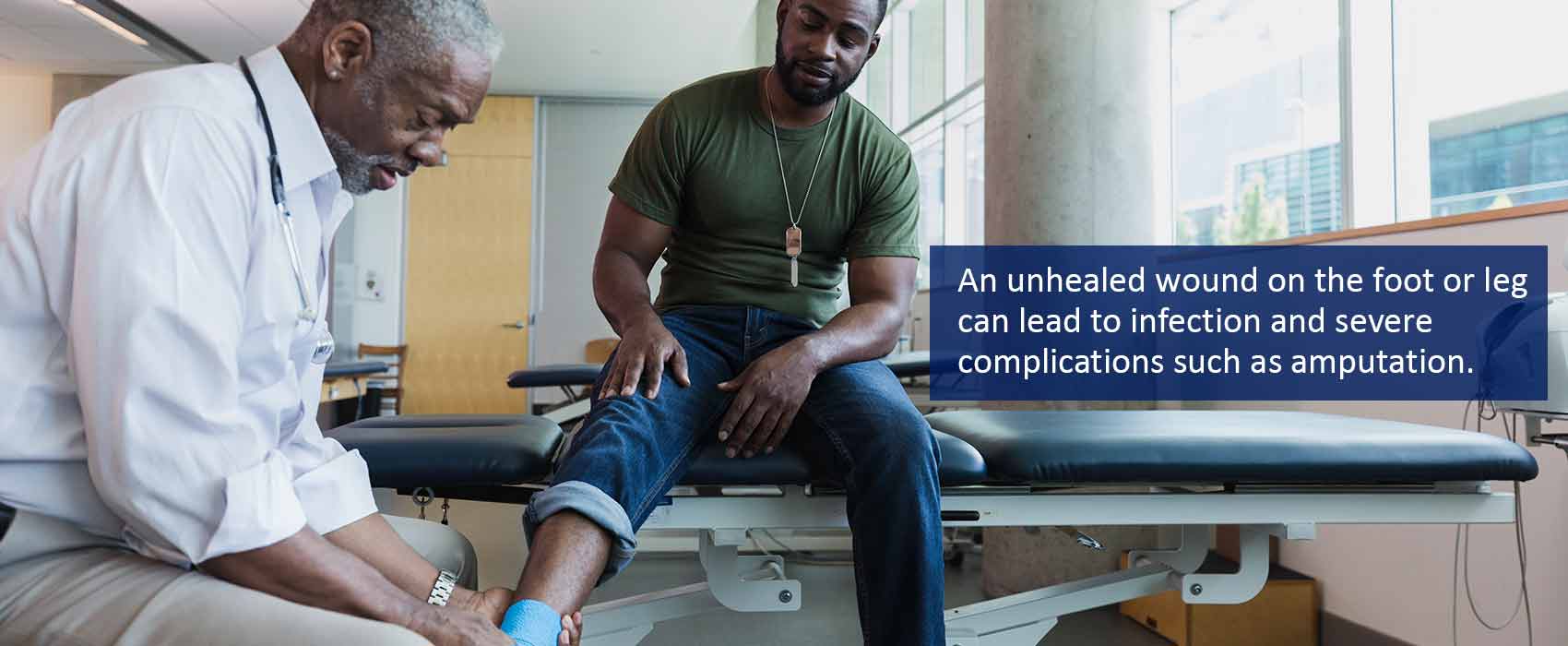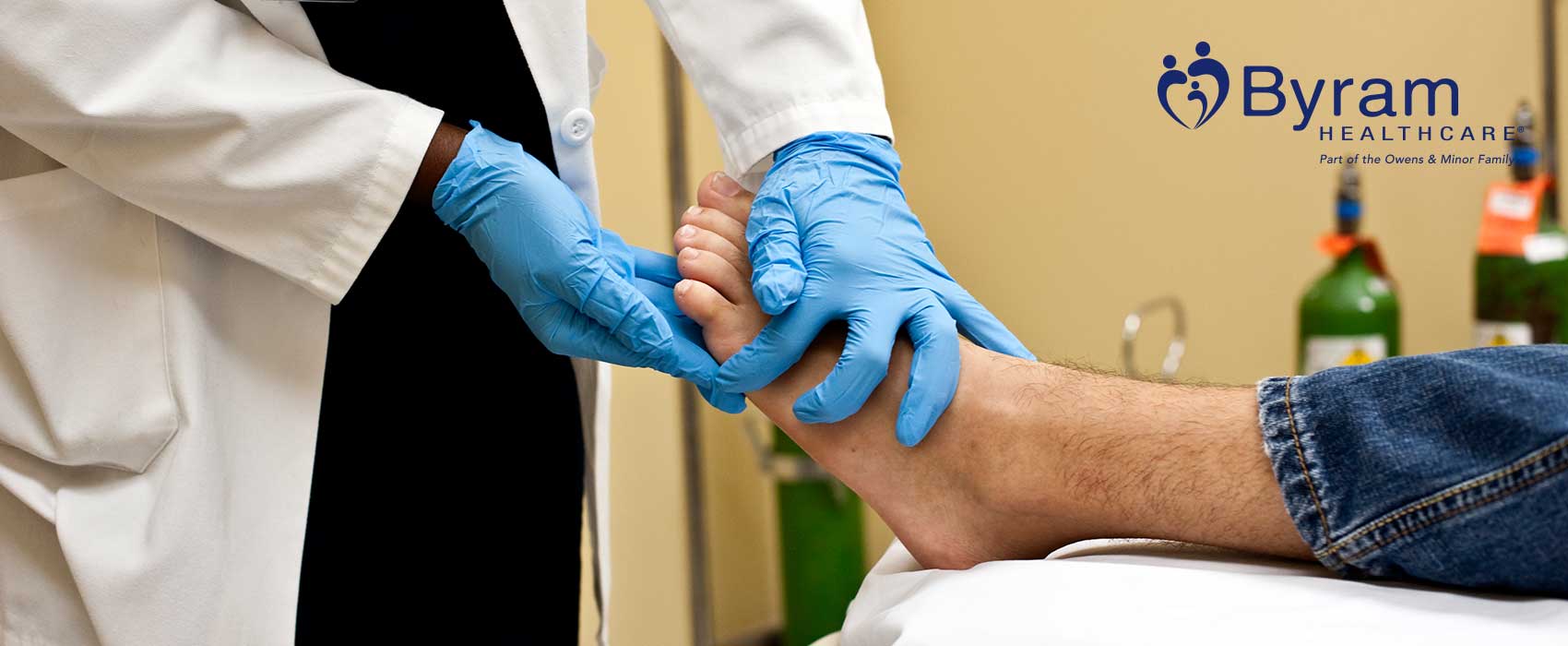
When you get hurt, your body reacts. It will immediately start to heal itself and get back to a neutral state. We always strive to maintain homeostasis and our organs and systems function accordingly throughout the day. If an accident, injury, or trauma occurs that breaks through the skin, your body starts the healing process. Wounds can heal in days or take months to treat. This timeline depends on whether the wound is acute or chronic. In this article, we’ll explore the difference between acute and chronic wound care.
Understanding the Stages of Wound Healing
Before getting into the underlying difference between acute and chronic wound care, it’s important to understand how wounds progress through the healing process. There are four distinct stages of wound healing: hemostasis, inflammation, proliferation, and remodeling.1
- Hemostasis
Hemostasis is the process of the initial clotting that forms right after injury occurs to help get the bleeding under control.1 This is a result of platelets releasing factors that help your blood clot and begin healing.1 If you have underlying conditions like diabetes, hemostasis can be disrupted and take longer. Talk to your doctor if you have any conditions that may interfere with the healing process or are known to elongate it.
- Inflammation
After the clot has formed, your body will send signals to the cells near the injury that cause inflammation. This is through the use of neutrophils, which help protect the site of injury against infection and activate fibroblasts, which jumpstart the healing process.1 This is the stage of wound healing that will determine whether or not you have an acute or chronic wound. If inflammation occurs for too long, it’s important to change your treatment plan to accommodate for chronic wound care.
- Proliferation
Once inflammation starts to subside, proliferation occurs. This is when your wound starts to slowly get smaller and fill with new connective tissues.1 This is the primary stage of healing where new growth factors are produced and start to multiply more rapidly.1 It’s important to take care of your wound during proliferation to avoid reverting back to the inflammation stage and reduce the likelihood of infection.
- Remodeling
The final phase of wound healing is remodeling. During this stage, collagen production at the site starts to increase and your wound is closed.1 Remodeling incorporates the healing of scar tissue and therefore, can take many months or years to occur. Acute wounds are still subject to lengthy periods of remodeling while the scar tissue strengthens and decreases in size.
What is an Acute Wound?
Acute wounds follow the expected and predictable rate of healing through each of the stages above. Acute wounds usually do not have complications and show a definite sign of healing within one to four weeks. All wounds start out as acute wounds.
Acute wounds can occur from any incident of trauma that damages the skin. Many acute wounds are caused by small abrasions, any type of burns, a laceration, puncture wounds, or surgical incisions. You’ll be able to tell if you have an acute wound, as there will be damage to your skin, bleeding, and likely pain in the localized area. In more severe cases, you might also experience high levels of swelling, tenderness, or even a fever.
What is a Chronic Wound?
A chronic wound starts as an acute wound. It becomes chronic when it doesn’t move through an expected or predictable rate of healing through each stage of wound healing. Wounds are considered chronic when they fail to heal within about four weeks after being treated. If it has not healed entirely in two months, it’s considered a chronic wound.
There are a number of causes of chronic wounds. Sometimes, the amount of pressure on an area makes wound healing unpredictable. Other times, a patient may have increased bacterial load, trauma, lack of blood supply, inappropriate treatment, or infections. To keep patients of chronic wounds safe, it’s important to use advanced wound dressings in conjunction with nutritional interventions and a wound care specialist.
If you have an acute wound and find that healing is taking long or getting complicated, it’s important to look for any signs or symptoms that could indicate the transition into a chronic wound. The primary sign is irregular healing. If your wound doesn’t seem to be getting any better, especially after a few weeks, contact your doctor to learn more about how you should help treat it. If there is any pus, excessive inflammation, or extreme pain throughout the healing process, it could be a sign that the acute wound has turned chronic. Since most chronic wounds tend to stall in the inflammation stage of healing, you will notice irregularities. Talk to your doctor for more information about how to heal your chronic wound and what types of wound care supplies you’ll need to order.
How to Treat an Acute Wound
Treating an acute wound involves cleaning and sterilizing the injury and applying the proper wound care dressings, as ordered by your physician. How you treat an acute wound largely depends on the size of the wound, where it is on your body, and how severe it is. In some cases, stiches or staples may be required. Your doctor will talk to you about how to treat your specific wound and the best guidelines to follow for wound care. It is imperative that you follow your doctor’s treatment plan to avoid having an acute wound turn into a chronic wound.
General principles of changing an acute wound dressing involve the following.
- Wash your hands thoroughly with soap and water.
- Make sure to set all of your supplies out on a clean surface or paper towel prior to getting started.
- Open all of the packages for your wound care and cut any tape in advance.
- Use specific wound care scissors to cut any dressings and make sure that they are cleaned both before and after use.
- After removing your old wound dressing, take some time to examine it and note any changes to your wound. If you notice an increase in drainage, a new odor, a change in color (green or blue) of the drainage, redness, increased pain, have a fever over 100°F, or have any spikes in your blood sugar levels, call your doctor immediately. These can be signs that your acute wound isn’t healing properly or is infected.
- Clean your acute wound with the cleaner that your doctor recommended. Oftentimes soap and water are sufficient, but you may also use a saline or specific type of wound cleaner. Clean the wound from the inside out.
- Apply your new wound dressing as recommended by your physician and tape down the edges or wrap it with gauze to secure it.
- Wash your hands and clean up the area. Make sure to clean and sanitize any equipment you used.
In addition to making sure that you follow proper guidelines for cleaning and caring for your wound, it’s important that you eat a diet that’s filled with nutritious foods. Healing happens from the inside out, so you need to make sure your body is fueled properly and getting the necessary nutrients, vitamins, and minerals. Many doctors recommend increasing your intake of calories and protein to help assist in wound healing. Try to eat protein at every meal and spread your meals out throughout the day. Eat six small meals instead of three large ones to stabilize blood sugar levels and keep your metabolism strong. Eat plenty of fruits and vegetables and always keep your body hydrated by drinking at least eight, 8 oz. glasses of water per day. Avoid sugary drinks like sodas or sports drinks and do not drink alcohol.
How to Treat a Chronic Wound
Treating a chronic wound is very similar to treating an acute wound at first. You’ll need to regularly clean your chronic wound and change the dressings to avoid infection. Since chronic wounds last for a long time, this can get cumbersome but is essential in speeding up the healing process.
One way that treating chronic wounds differs is through debridement. In some situations, your doctor or nurse will need to remove dead or inflamed tissue around your wound that is interfering with the healing process. Your doctor will discuss your options and use a local anesthetic to help ease the discomfort.
Many chronic wound dressings differ from acute wound dressings to help aid in the healing process. You’ll likely also need to take antibiotics, use compression bandages, and in some cases, use hyperbaric oxygen therapy. Your doctor will discuss your options with you alongside any pain management.
Conclusion
If you want to protect yourself and your family from the complications of wounds, regardless of their size or type, it’s important to make sure you’re ready. Healing an acute wound is easy, but if it transitions into a chronic wound it’s going to become more difficult. The best way to be ready is to have a good supply of wound care supplies and any wound dressings you may need. Byram Healthcare is a leading wound care supplier with an outstanding Chronic Wound Program and plenty of educational materials. At Byram Healthcare, we have everything from bandages and gauze to collagen dressings, hydrogels, and compression bandages. View our product selection here or request a comprehensive catalog to learn how Byram Healthcare can help you today!
Sources:
1 https://www.woundsource.com/blog/difference-between-acute-and-chronic-wounds



